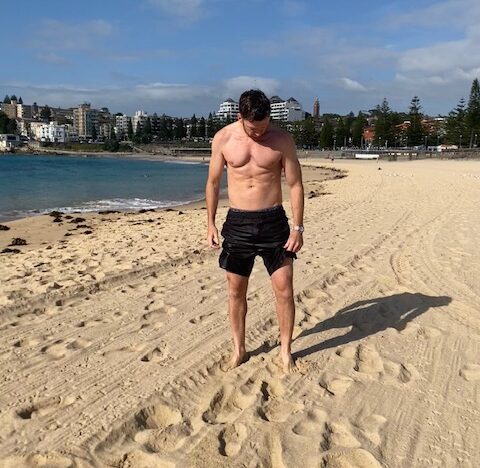I’m not a big fan of the mobile phone. Actually, nix that. I hate ‘smart’…
Body Scans, Body Fat & Visceral Fat – The Sequel
My recent blog post about my latest Dexa scan showing me at a disappointing 21% body fat was well received. You can refresh yourself with the post right here.
By this I mean that somebody other than my Mum read it. In fact I got a slew of positive comments such as:
“You fat bastard – my latest scan showed me at 15.2% body fat.”
“21% body fat and 0% muscle.”
Brilliant.
There were some others that I liked more:
“There’s no way you’re 21%, more like 15/16%”
“Where is the 21%? Unless you have a big booty you’re hiding from us.”
“Read your latest blog today on visceral fat. It really resonated with me.”
Well, it turns out there is truly more to this red-hot news story. Read on for a major plot-twist that nobody saw coming.
The Second Scanning of Super Fit Dad
Yes, you read that section heading correctly. I, bizarrely, compared my second body composition scan in two days with the Second Coming of the artist formerly known as Jesus. Author’s prerogative and all that, I guess.
So sad and disappointed was I with the 15th November Dexa Scan that, in a fit of pique, I decided that the machine was faulty and I needed a new scan elsewhere to cross-verify the data.
And so, off I went to the 6X Training facility in Maroubra for an InBody Scan.
InBody is an in-gym body composition scan that requires you to step onto a plate and hold a couple of handles while it scans you in about a minute (I think).
It is very similar to another type of scanner used in gyms – the Evolt 360 body scanner.
For the Dexa, you lie down on a bed / gurney whilst the machine runs over your entire body and scans you. It takes 6-7 minutes.
I’d always been under the impression that the Dexa was the more accurate given its wide use in medicine and the more scientific aspects to it (namely it using enhanced x-ray technology rather than Bioelectrical Impedance Analysis feedback used in InBody and Evolt machines), but back in the day when I was a lithesome 11% body fat, I used to regularly get both InBody & Evolt scans, purely because they were easier to find (at my local gym for instance).
You can bone up on your scanner efficacy here in this article by the University of Otago if you have the time and the inclination.
The InBody Results
The key data from the scan was:
| Weight (kg) | 85.4 |
| Skeletal Muscle Mass (kg) | 40.1 |
| Percentage Body Fat % | 17.9 |
| Visceral Fat Level (?) | 6 (low) |
Okay – this is looking better already.
But what does it actually tell me?
1) When Benchmarking You Have To Use The Same Machine
This may seem obvious but it’s the #1 rule when benchmarking your progress.
The two different types of scanning machine yielded results that varied by 16.7%. Different folks will argue the case for the accuracy of their machines. I’m not a scientist or very clever so I’ll just make sure that whenever I’m benchmarking results I’m comparing apples with apples.
2) Your Data Might Affect Your Mood
21% makes me very sad. 17% tells me I’m on the right track and I can (fairly easily) get to 15%.
There’s a very human aspect to weight-loss, fat-loss and health & fitness that means we’re easily knocked and discouraged if things go awry. [Or perhaps this is just me.]
In these phases it’s important to stick to the process, don’t sweat the minutiae and look for the small victories.
For me, after my Dexa Scan I had a dummy-spit and went for a fresh scan, but even before that I’d seen my weight drop by 5kg and the visceral fat reduce by a decent amount (I think). My body shape had changed, too.
So, whilst body fat hadn’t dropped as I’d wanted, there was still a bunch of positive data. Best to focus on these otherwise we’d drive ourselves mad.
3) Having The Data Available Makes You Very Accountable
Peter Drucker: “If you want to manage it, you must first measure it.” (Or something like that).
But, holy heck and I’ll be darned if having clear and (mostly) accurate data at your fingertips doesn’t make you far more disciplined when it comes to eating choices, exercise choices and general lifestyle behaviours. Again, this may only apply to me but I somehow highly doubt it.
Much like actually entering a marathon at some point in the future being the best way to kick-start your running training, knowing you have another body scan in 4-6 weeks seems to be a sure-fire way to keep you accountable in your decisions.
Conclusion And What Machine I Recommend
The type of machine you do your scan on isn’t that important.
Using the same type of machine for each scan IS super-important. Consistency is king.
If you want a cheaper (vital in a cost of living crisis), more accessible and slightly less detailed scan, then Evolt 360 or InBody serve their purpose well. In Australia they cost around $40 each time.
If you do want a more scientific and granular scan that delves into visceral fat level as well as top-line body fat percentage, then it’s the Dexa, I’m afraid. In Australia they cost around $90.

